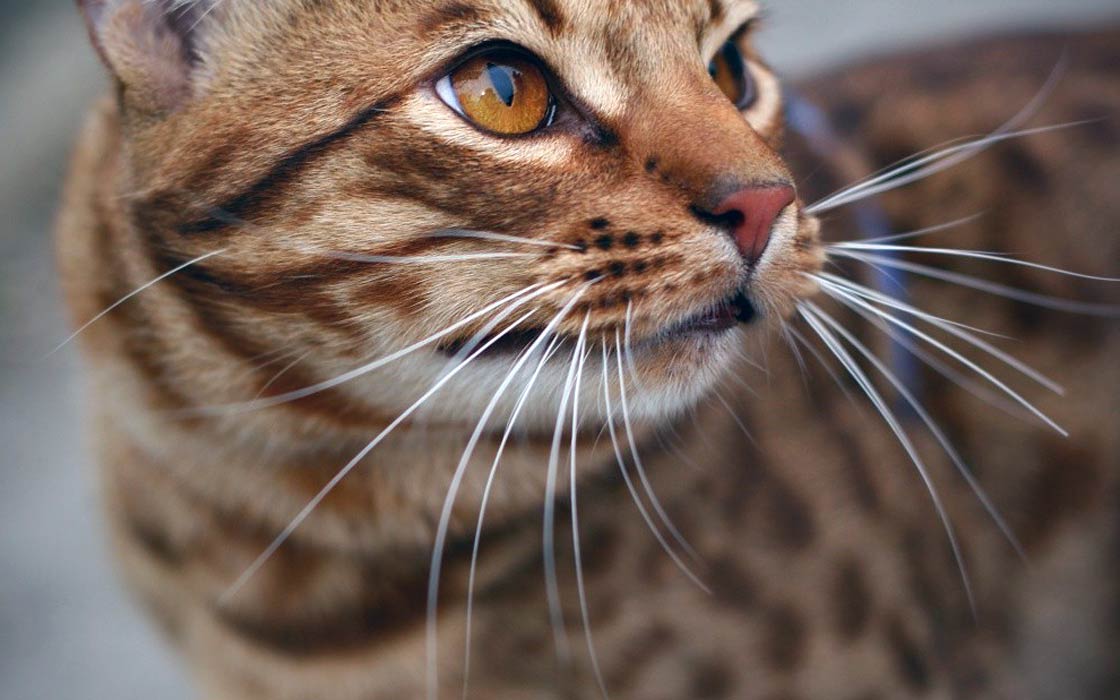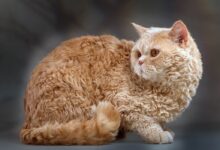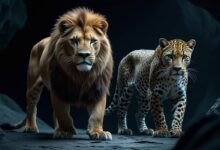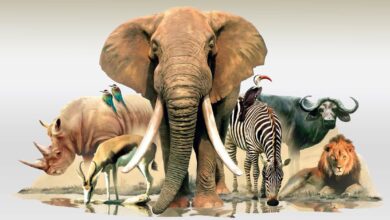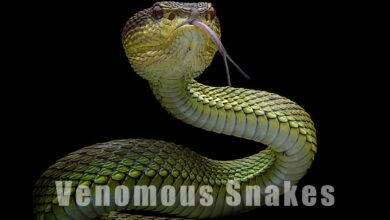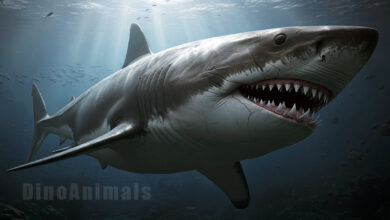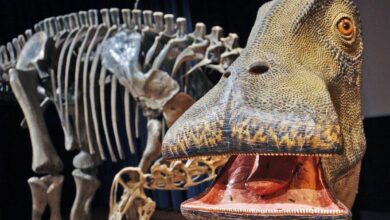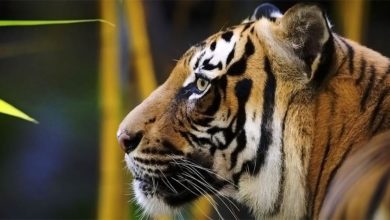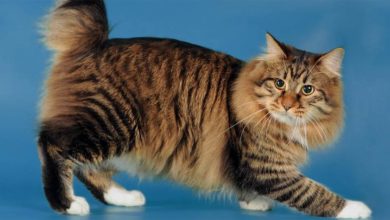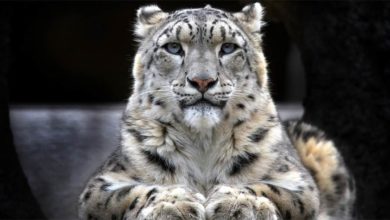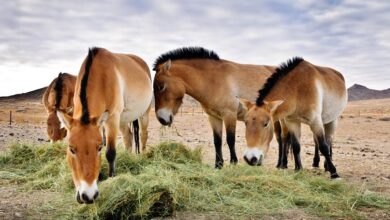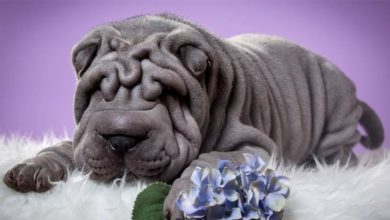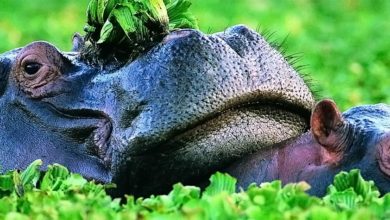Ocicat – cat breed
This artificially bred breed was not in the plans of its creator. The unusually colored cat turned out to be a “side effect” of genetic crosses of two other breeds. Nobody expected that the combination of Siamese and Abyssinian cats would create a patterned cat with a wonderful, joyful character. The wild and thus inaccessible appearance of the Ocicat should therefore not be discouraging. Under the raw exterior, there is a family animal, joyful and open. Although similar to the ocelot, unlike the Savannah cat it does not have the blood of a wild cat.
FIFe classification
- Category III: Shorthair cats
- EMS code: OCI
- Country of origin: United States
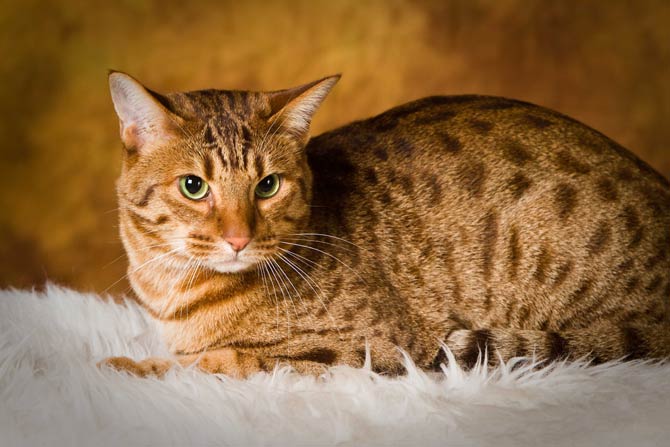
History and origin of the breed
The creator of the breed was Virginia Daly, a resident of Berkley, Michigan. She originally wanted to breed a Siamese cat with the color of an Abyssinian cat. In 1964, the first generation of such kittens was born. Indeed, they resembled Abyssinian cats, but in the second generation not only Siamese with Abyssinian color appeared, but also one young covered with ivory hair, additionally decorated with golden spots. The kitten was named Tonga, but the breeder’s daughter nicknamed the kitten “Ocicat”.
The cat was sterilized and sold as a pet. Subsequent crossbreeding of Tonga’s parents also led to the creation of similar brothers. This became the basis for the creation of a separate breeding program for the new breed. Over time, other breeders began to duplicate the pattern according to which patterned kittens were to appear in the world: first, the Siamese and Abyssinian cats were crossed, and their offspring were again crossed with Siamese cats.
CFA breeders have joined the British Shorthair breeding plan, giving the new breed a more stocky body and silver tones. Nowadays, the breed is accepted by all large felinological federations.
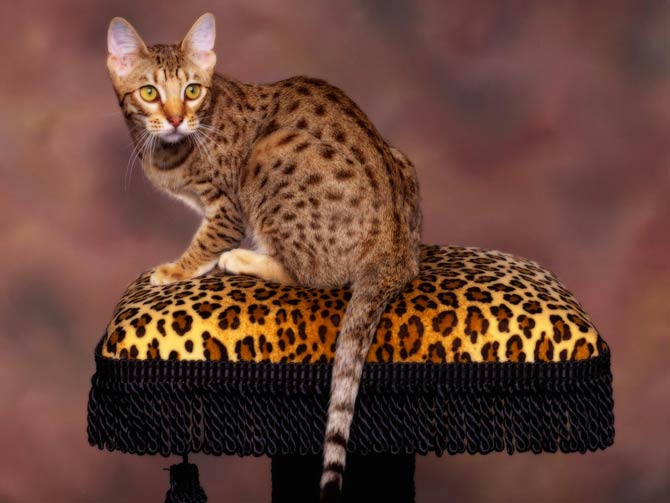
Characteristic
Appearance
The silhouette is rather stately, strong and muscular, supported on strong legs ending in large, oval paws. The head is wedge-shaped – longer than broader. The eyes are almond-shaped and the large ears slope at a 45o angle.
Ocicat, however, is mainly characterized by its mottled fur. It was influenced by the genes of the Abyssinian ancestor, which, like all Abyssinian cats, has agouti-colored hair. It is thanks to the two-color hair that a brindle pattern can be created. An athletic, slim figure is a legacy after the Siamese cats.
The pattern on the fur is similar to that of the ocelot – short and soft fur is covered on the sides of the body with round spots, sometimes reminiscent of fingerprints. There are 3 rows of similar spots running along the spine, ending at the base of the tail. On the surface of the tail, you can see large rings, while the tip is black. The limbs also have ring-shaped patterns, and there is an “M” -shaped mark on the forehead (almost like from the James Bond movie;)).
Color variations
Within the breed, 12 color varieties were classified, including: chocolate, cinnamon, blue, lavender, fawn, silver, as well as their combinations.

Temperament
In the case of this cat, it is not worth taking into account the wild appearance. It does not go hand in hand with a very family disposition. Ocicat is an animal that is devoted, loving and fond of affection.
It often welcomes new guests, so it does not avoid new people, and on the contrary – it can jump on their laps. However, as every cat has a different character, within the breed there are obviously more and less bold individuals. This applies to all breeds, regardless of the general character desired by breeders.
It is passionate about playing, it can also be taught to walk on a leash, if it really wants to. It is highly intelligent – it learns new tricks quickly, and is also fond of all sorts of puzzles that stimulate its mind and keep it busy. She also starts to react relatively quickly to her name. Its intelligence, however, goes hand in hand with cunning, so it’s better not to open cabinets in which we keep valuables. Ocicat, curious about the new object, will certainly quickly “learn” how to open the unknown door.
Although its Siamese ancestors often make various sounds, the Ocicat is not that loud. It can adapt to new circumstances, but does not like loneliness. So if the owners are often away from home, the Ocicat should be accompanied by another cat or a nice dog.
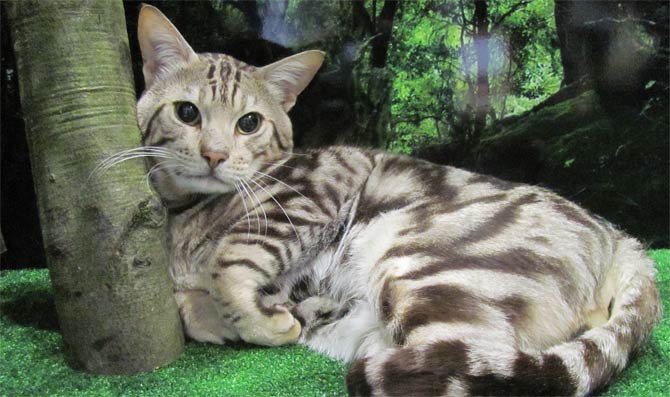
Health
Ocicat may suffer from:
- Progressive retinal atrophy leading to blindness.
- Hypertrophic cardiomyopathy, a common problem for many cats, not only purebred.
- Kidney amyloidosis (due to its relationship with the Abyssinian cats) and periodontal disease.
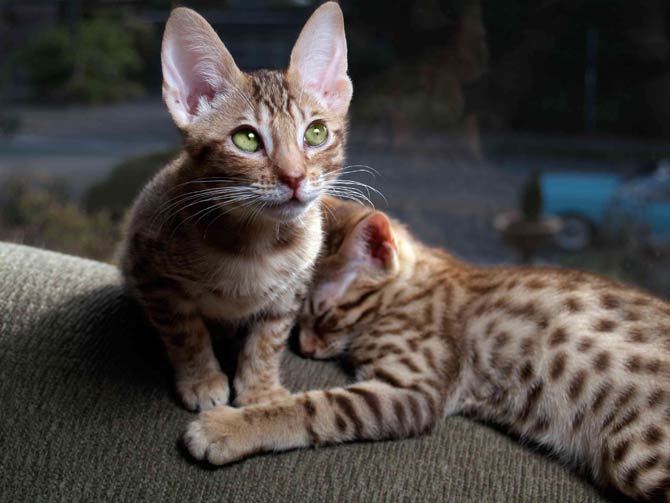
Detailed data / dimensions (size)
Ocicat
- Height at the withers: 22-27 cm (8.6 – 10.6 in)
- Weight:
- females: 2-4 kg (4.4 – 8.8 lb)
- males: 4-6 kg (8.8 – 13.2 lb)
- Lifespan: 10-15 years
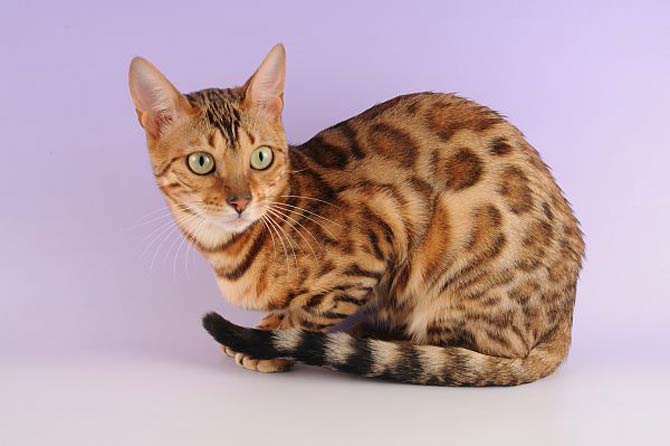
Ocicat – interesting facts
- The name “Ocicat” emphasizes the breed’s resemblance to a wild relative – the ocelot.
- At times, the Ocicat resembles a dog. Many representatives of this breed can be taught to retrieve, sit down, lie down and do other typical dog tricks.
- Some Ocicats like water.


